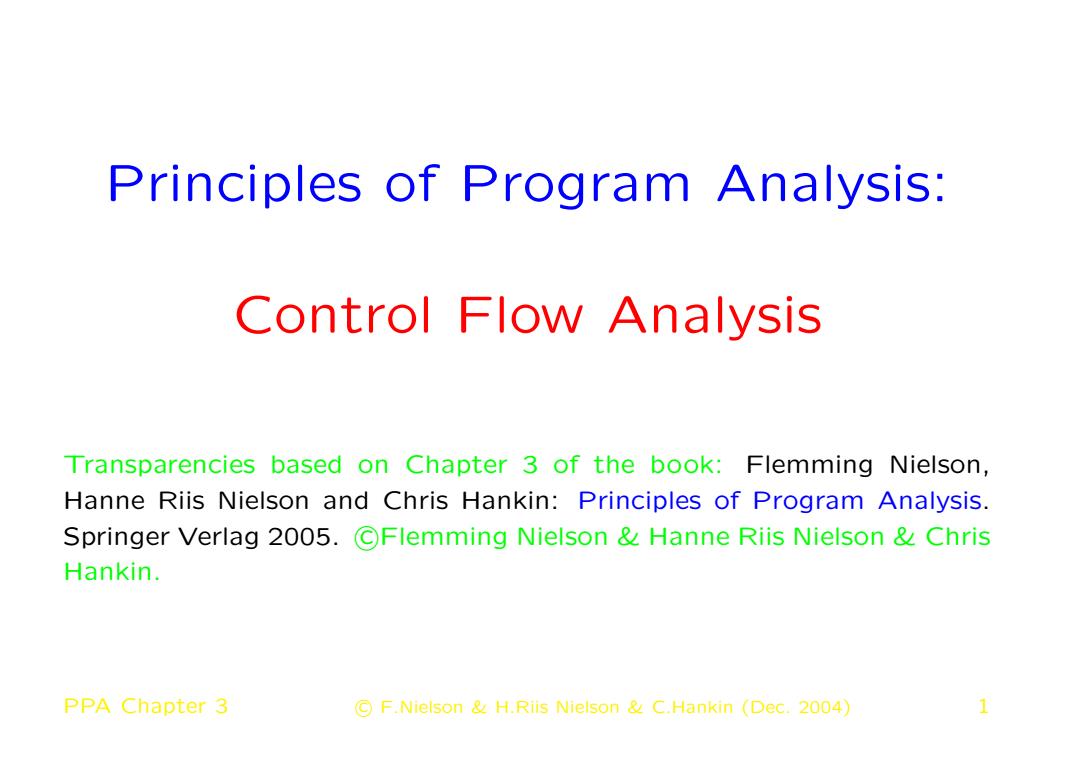
Principles of Program Analysis: Control Flow Analysis Transparencies based on Chapter 3 of the book:Flemming Nielson, Hanne Riis Nielson and Chris Hankin:Principles of Program Analysis. Springer Verlag 2005.CFlemming Nielson Hanne Riis Nielson Chris Hankin. PPA Chapter 3 C F.Nielson H.Riis Nielson C.Hankin (Dec.2004) 1
Principles of Program Analysis: Control Flow Analysis Transparencies based on Chapter 3 of the book: Flemming Nielson, Hanne Riis Nielson and Chris Hankin: Principles of Program Analysis. Springer Verlag 2005. c Flemming Nielson & Hanne Riis Nielson & Chris Hankin. PPA Chapter 3 c F.Nielson & H.Riis Nielson & C.Hankin (Dec. 2004) 1
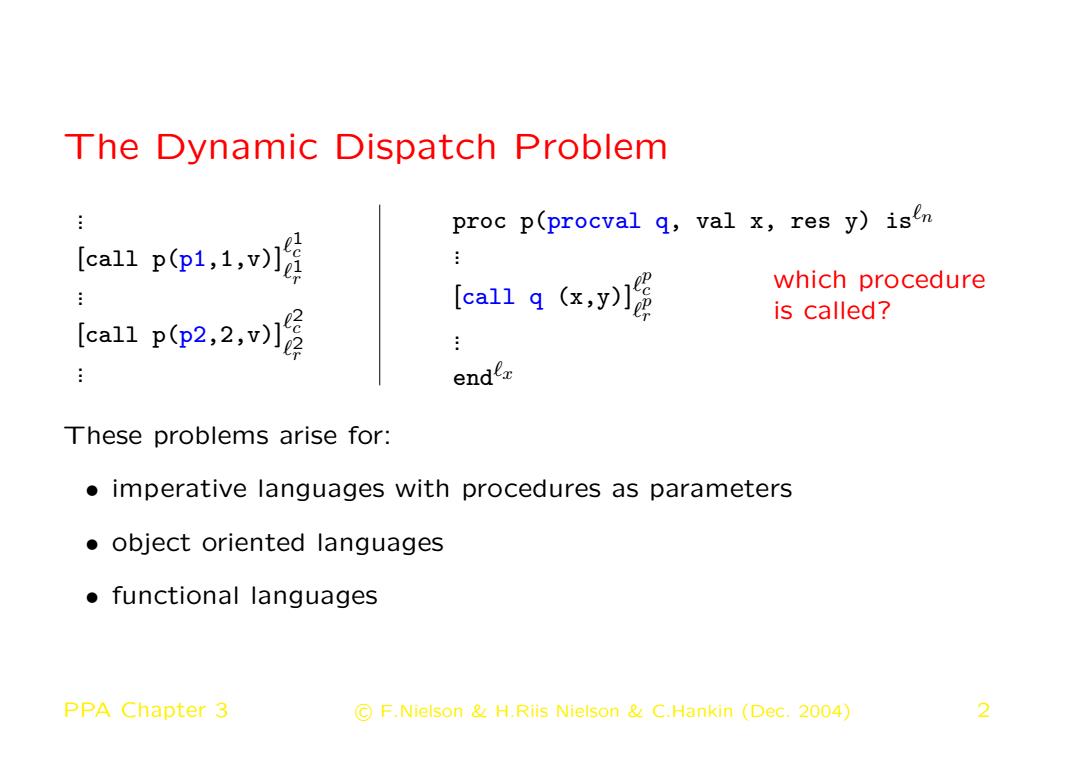
The Dynamic Dispatch Problem proc p(procval q,val x,res y)isen Ical1 P(pi1v) [call q (x,y) which procedure is called? [cal1 p(p2,2.v ende These problems arise for: imperative languages with procedures as parameters object oriented languages functional languages PPA Chapter 3 C F.Nielson H.Riis Nielson C.Hankin (Dec.2004) 2
The Dynamic Dispatch Problem ... [call p(p1,1,v)] ` 1 c ` 1 r ... [call p(p2,2,v)] ` 2 c ` 2 r ... proc p(procval q, val x, res y) is`n ... [call q (x,y)] ` p c ` p r which procedure is called? ... end`x These problems arise for: • imperative languages with procedures as parameters • object oriented languages • functional languages PPA Chapter 3 c F.Nielson & H.Riis Nielson & C.Hankin (Dec. 2004) 2
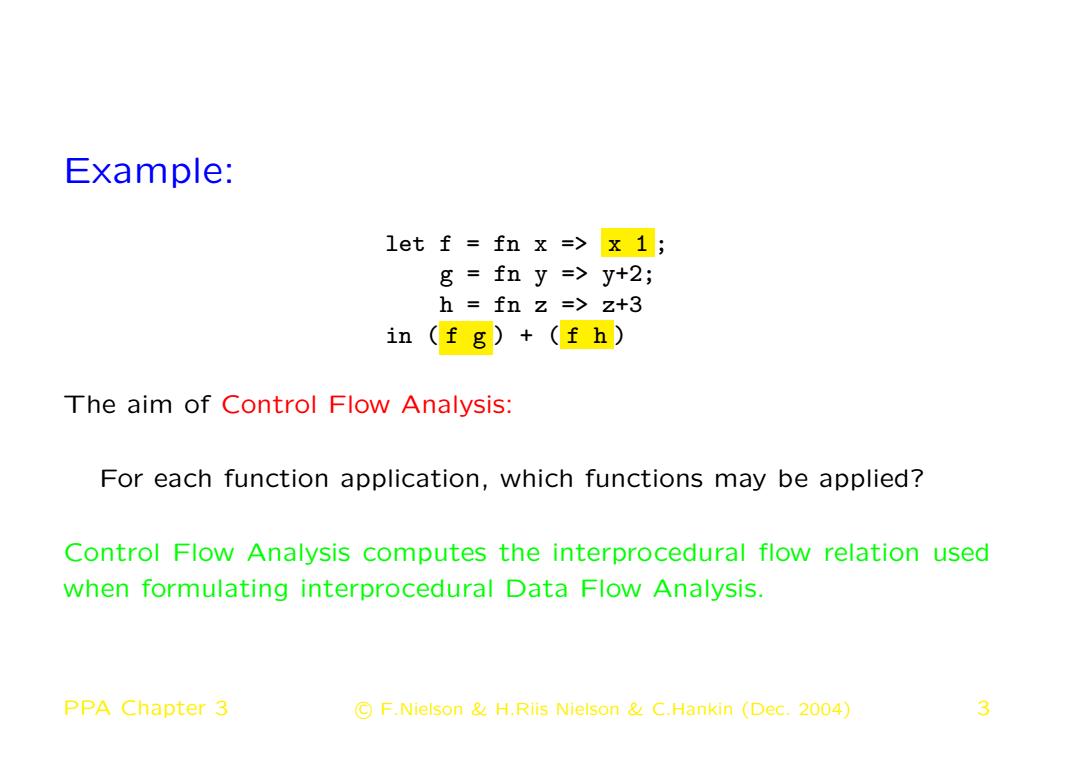
Example: let f fn x =x 1; g fn y =y+2; h fn z =z+3 in (f g)+(f h) The aim of Control Flow Analysis: For each function application,which functions may be applied? Control Flow Analysis computes the interprocedural flow relation used when formulating interprocedural Data Flow Analysis. PPA Chapter 3 C F.Nielson H.Rlis Nielson C.Hankin (Dec.2004) 3
Example: let f = fn x => x 1 ; g = fn y => y+2; h = fn z => z+3 in ( f g ) + ( f h ) The aim of Control Flow Analysis: For each function application, which functions may be applied? Control Flow Analysis computes the interprocedural flow relation used when formulating interprocedural Data Flow Analysis. PPA Chapter 3 c F.Nielson & H.Riis Nielson & C.Hankin (Dec. 2004) 3
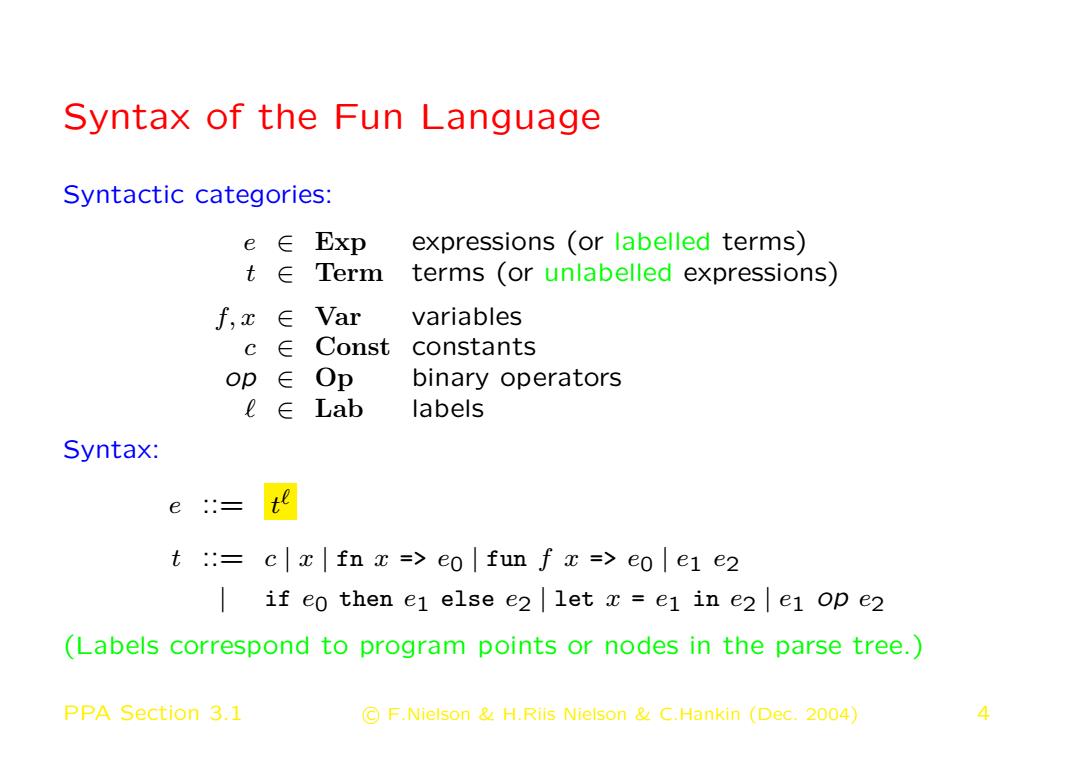
Syntax of the Fun Language Syntactic categories: e∈Exp expressions (or labelled terms) t∈Term terms (or unlabelled expressions) f,x E Var variables Const constants Op∈ Op binary operators ∈ Lab labels Syntax: e :; t :c x fn x =eo fun f x=>eo e1 e2 if eo then e1 else e2 let x=e1 in e2 e1 op e2 (Labels correspond to program points or nodes in the parse tree. PPA Section 3.1 F.Nielson H.Riis Nielson C.Hankin (Dec.2004) 4
Syntax of the Fun Language Syntactic categories: e ∈ Exp expressions (or labelled terms) t ∈ Term terms (or unlabelled expressions) f, x ∈ Var variables c ∈ Const constants op ∈ Op binary operators ` ∈ Lab labels Syntax: e ::= t ` t ::= c | x | fn x => e0 | fun f x => e0 | e1 e2 | if e0 then e1 else e2 | let x = e1 in e2 | e1 op e2 (Labels correspond to program points or nodes in the parse tree.) PPA Section 3.1 c F.Nielson & H.Riis Nielson & C.Hankin (Dec. 2004) 4
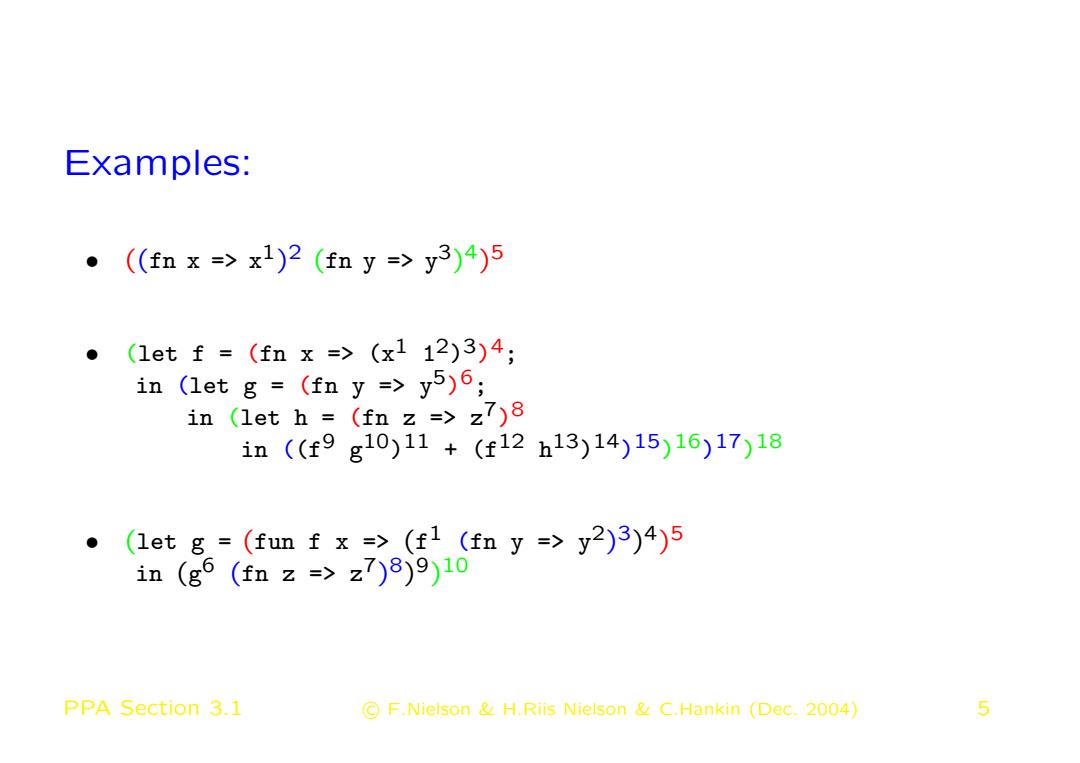
Examples: 。(fnx=>x2)2(fny=>y3)4)5 ●(1etf=(fnx=>(x112)3)4; in (let g=(fn y =y5)6; in (let h=(fn z =z7)8 in(f9g10)11+(f12h13)14)15)16)17)18 (1et g=(fun f x =>(f1 (fn y =y2)3)4)5 in(g5(fnz=>z7)8)9)10 PPA Section 3.1 F.Nielson H.Riis Nielson C.Hankin (Dec.2004) 5
Examples: • ((fn x => x1) 2 (fn y => y3) 4) 5 • (let f = (fn x => (x1 1 2) 3) 4; in (let g = (fn y => y5) 6; in (let h = (fn z => z7) 8 in ((f9 g 10) 11 + (f12 h 13) 14) 15) 16) 17) 18 • (let g = (fun f x => (f 1 (fn y => y2) 3) 4) 5 in (g 6 (fn z => z7) 8) 9) 10 PPA Section 3.1 c F.Nielson & H.Riis Nielson & C.Hankin (Dec. 2004) 5